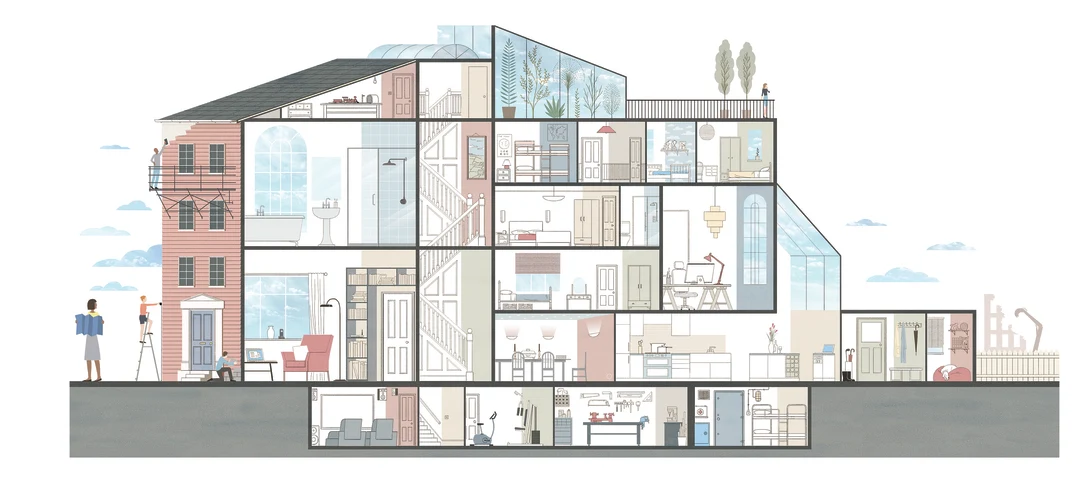In the ever-evolving world of residential design, staying ahead of the curve is crucial for interior designers and builders. The latest data from the American Institute of Architects (AIA) sheds light on 7 trends shaping the industry. Here are the key takeaways that professionals in the field should consider when planning their next projects:
1. Right-Sizing Homes: The era of ever-expanding home sizes is coming to an end. According to the AIA’s “Home Design Trends Survey,” the square footage of homes is stabilizing and, in some cases, decreasing, especially in entry-level homes. This shift is largely driven by the need to manage building costs efficiently and designing smaller homes that prioritize livability and functionality has become a primary objective for architects and builders.
2. Aging-in-Place and Accessibility: The focus on designing homes for aging-in-place remains strong. With an aging population, there is a growing demand for homes that should accommodate specific mobility needs. Interior designers and builders should consider incorporating features like wider doorways, step-free entrances, and accessible bathroom and kitchen designs that can cater to this demographic.
3. Outdoor Living Spaces: Outdoor living spaces continue to be a major trend in residential design. The survey highlights a significant emphasis on blended indoor/outdoor areas and outdoor firepits. To meet this demand, professionals should explore innovative ways to seamlessly integrate both indoor and outdoor spaces, creating functional and inviting environments for homeowners and their guests.
4. Smart Appliances and Energy Efficiency: Smart appliances continues to gain popularity, driven by the desire to connect us while cooking and reducing energy consumption, interior designers and builders should keep abreast of the latest advancements in smart home technology and seek opportunities to incorporate these appliances into their kitchen designs.
5. Bathroom Bliss: Bathrooms remain a key focal point in home design. The AIA reports an increase in the number of bathrooms per home. Designers should consider incorporating large, walk-in showers and sensor faucets, which are among the leading features homeowners seek in their bathrooms today.
6. Kitchen Evolution: Kitchens are evolving to meet changing lifestyles. The survey indicates a growing trend toward larger and more functional kitchens. Even outdoor kitchens and working pantries are continuing to gain popularity, showing a shift towards creating versatile and efficient cooking spaces for the entire kitchen.
7. Construction Cost Challenges: Rising construction costs are impacting the decisions of homeowners and clients. Many are scaling back or canceling home addition/renovation projects due to budget constraints. Interior designers and builders should be prepared to work creatively within these constraints to deliver value and functionality to hopefully complete the project.
To end, keeping pace with the latest trends in residential design is essential for interior designers, builders and trade professionals. Whether it’s designing for aging-in-place, maximizing outdoor living spaces, embracing smart technology, or optimizing kitchen and bathroom designs, staying informed and adaptable is the key to success in today’s ever-changing housing market.
Shaun Ayala
Kitchen & Bath Marketer – Pacific Sales/ Best Buy

